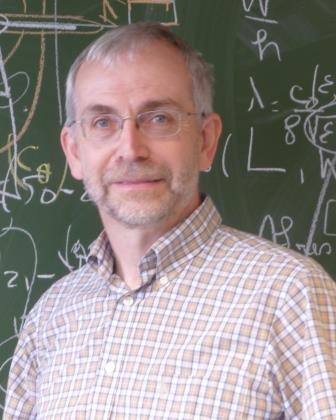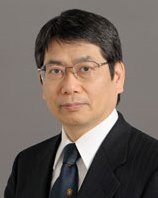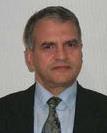Plenary Speakers
 Prof. Johan Schoukens
Prof. Johan Schoukens
Department of Fundamental Electricity and Instrumentation
Vrije Universiteit Brussel
Belgium
The control community makes use of mathematical models intensively to design high quality controllers. These mathematical models are often obtained from first principles, making use of detailed knowledge about the physical laws that describe systems. The major advantage of such an approach is that it provides detailed physical models that give much insight into the problems studied, however, at the cost of a long and difficult modeling process. At the other end of the possible modeling strategies we find the data-driven approach, where all information is retrieved from experimental data. These models are called black box models, and it is usually less expensive and less time-consuming to get them. System identification theory was developed to address the need for good methods to estimate mathematical models from noisy data. Nowadays mature and inexpensive tools are available to derive good models for linear dynamic systems. However, many systems are nonlinear so that more advanced tools are needed. Building nonlinear models is much more involved, more expensive, and more time consuming than identifying a linear model. For that reason it is an important decision at the beginning of a design procedure, whether a linear or a nonlinear model should be identified.
In the first part of this presentation it will be shown that it is possible to detect, qualify, and quantify the presence of nonlinear distortions. On the basis of this information it can be decided if an inexpensive linear model will be good enough for a successful design, or that a more elaborated nonlinear modeling effort should be made. In the second part, the impact of nonlinear distortions on the linear identification framework will be discussed, so that the user gets a better understanding of the potential risks and problems when linear models are used in a nonlinear setting. Eventually, in the third part of the presentation a number of nonlinear modeling strategies will be discussed, considering unstructured and highly structured models.
In the first part of this presentation it will be shown that it is possible to detect, qualify, and quantify the presence of nonlinear distortions. On the basis of this information it can be decided if an inexpensive linear model will be good enough for a successful design, or that a more elaborated nonlinear modeling effort should be made. In the second part, the impact of nonlinear distortions on the linear identification framework will be discussed, so that the user gets a better understanding of the potential risks and problems when linear models are used in a nonlinear setting. Eventually, in the third part of the presentation a number of nonlinear modeling strategies will be discussed, considering unstructured and highly structured models.
 Prof. Kouhei Ohnishi
Prof. Kouhei Ohnishi
Department of System Design Engineering
Keio University
Japan
The paradigm of 21st century is clearly different from 20th century. In the 20th century, the construction of highly industrialized society was a key to be a modernized process. The mass production based on standardization was a symbol of modern society. This means people should adapt themselves to the industry products. Otherwise they should ask exceptions. This paradigm had given much influence to the social systems. This was effective when the society was even or underdeveloped. When people are satisfied with necessary and sufficient quantities of products, they tend to require what is different from others. The difference is now a key for social reference. The standardization is no more reference. Instead the exception becomes a key for 21st century. The question is what kind of industry will come after the mass production. There have been many answers on this question. At least, mass production based on standardization must be significant, however small number and wide variety of production will be more important. This means industry machines with high adaptability will be necessary. To acquire such adaptability, any production system should have force control inside. This gives the difficulty to the motion controller where the position control with very high stiffness and the force control with zero stiffness exist at the same time. This is solved by introducing decoupled coordinate transformation which connects velocity source and force source in the functional space. This talk will introduce the concrete process how the transformation is fixed. The simplest case is the function of transmittal of force between slave and master. This is known as the ABC method in real world haptics. More complicated process with multi degree-of-freedom will be also shown. If such functions will be installed, the production system will have more direct and convenient teaching system. Some examples with experimental results will be introduced.

 Prof. Wisama Khalil
Prof. Wisama Khalil
Ecole Centrale de Nantes
IRCCyN (Institut de Recherche en Communications et Cybernetique de Nantes)
France
This paper presents the dynamic modeling of floating systems with application for three-dimensional swimming eel-like robot and rowing system. The modeling approach is based on the recursive Newton-Euler, which has been proved as an efficient tool in modeling multi-rigid or flexible bodies. The proposed algorithm allows to simulate the robotfs movement (direct dynamic problem) and to calculate the control torques (inverse dynamic problem) as a function of the joint angles and the external forces on the links of the systems. Three different structures are treated in the paper serial, hybrid (parallel modules connected in serial) or having closed loop structure. The common characteristics of these structures are that they are composed of many degrees of freedom (more than twenty) and that there is no kinematic nor geometric relationship between the Cartesian motion of the system and the joint variables. To obtain the Cartesian evolution during the design or control of these systems the dynamic models must be used and developed. Owing to the complexity of such systems efficient and simple tools are needed to design and control them. For this goal we propose the generalization of the recursive Newton-Euler based algorithm of Luh and Walker [1] and of Featherstone [2] to these cases. The recursive nature of the Newton-Euler approach provides efficient and easy to implement algorithms, which can be programmed either numerically or efficient symbolic programming using customized techniques.
The paper is organized as follows: we will start by briefly recalling the description of multi-body systems using the modified Denavit and Hartenberg notations and the classical Newton-Euler algorithm for fixed tree-structure systems [3]. Then the general algorithms for moving base and floating systems will be given [4]. The application on simulating eel-like robot and rowing like robots will be presented together with the calculation of the contact forces between water and the body of the systems [5,6,7] . The talk ends with conclusion and current and future work.
References:
[1] J.Y.S. Luh, M.W. Walker, and R.P.C. Paul, "On-Line Computational Scheme for Mechanical Manipulator," ASME Journal of Dynamic Systems, Measurement, and Control, vol. 102, no.2, pp. 69-76, 1980.
[2] R. Featherstone, "The Calculation of Robot Dynamics Using Articulated-Body Inertias," International Journal Robotics Research, vol. 2, no. 1, pp. 13-30, 1983.
[3] W. Khalil and E. Dombre, "Modeling, Identification and Control of Robots," Hermes Penton Ltd, 2002.
[4] W. Khalil, "Dynamic modeling of Robots using Newton-Euler Formulation," Informatics in Control, Automation and Robotics, Lecture Notes in Electrical Engineering vol. 89, pp. 3-20, 2011.
[5] W. Khalil, G. Gallot, and F. Boyer, "Dynamic Modeling and Simulation of a 3-D Serial Eel-Like Robot," IEEE Transactions on Systems, Man, and Cybernetics, Part C: Applications and Reviews, vol. 37, no. 6, pp. 1259-1268, 2007.
[6] O. Ibrahim and W. Khalil, "Inverse and Direct Dynamic Models of Hybrid Robots," Mechanism and Machine Theory, vol. 45, no. 4, pp. 627-640, 2010.
[7] F. Rongere, "Simulation dynamique des systemes Bateau-Avirons-Rameurs(s)," Ph.D Thesis, Ecole Centrale de Nantes, 2011.
The paper is organized as follows: we will start by briefly recalling the description of multi-body systems using the modified Denavit and Hartenberg notations and the classical Newton-Euler algorithm for fixed tree-structure systems [3]. Then the general algorithms for moving base and floating systems will be given [4]. The application on simulating eel-like robot and rowing like robots will be presented together with the calculation of the contact forces between water and the body of the systems [5,6,7] . The talk ends with conclusion and current and future work.
References:
[1] J.Y.S. Luh, M.W. Walker, and R.P.C. Paul, "On-Line Computational Scheme for Mechanical Manipulator," ASME Journal of Dynamic Systems, Measurement, and Control, vol. 102, no.2, pp. 69-76, 1980.
[2] R. Featherstone, "The Calculation of Robot Dynamics Using Articulated-Body Inertias," International Journal Robotics Research, vol. 2, no. 1, pp. 13-30, 1983.
[3] W. Khalil and E. Dombre, "Modeling, Identification and Control of Robots," Hermes Penton Ltd, 2002.
[4] W. Khalil, "Dynamic modeling of Robots using Newton-Euler Formulation," Informatics in Control, Automation and Robotics, Lecture Notes in Electrical Engineering vol. 89, pp. 3-20, 2011.
[5] W. Khalil, G. Gallot, and F. Boyer, "Dynamic Modeling and Simulation of a 3-D Serial Eel-Like Robot," IEEE Transactions on Systems, Man, and Cybernetics, Part C: Applications and Reviews, vol. 37, no. 6, pp. 1259-1268, 2007.
[6] O. Ibrahim and W. Khalil, "Inverse and Direct Dynamic Models of Hybrid Robots," Mechanism and Machine Theory, vol. 45, no. 4, pp. 627-640, 2010.
[7] F. Rongere, "Simulation dynamique des systemes Bateau-Avirons-Rameurs(s)," Ph.D Thesis, Ecole Centrale de Nantes, 2011.